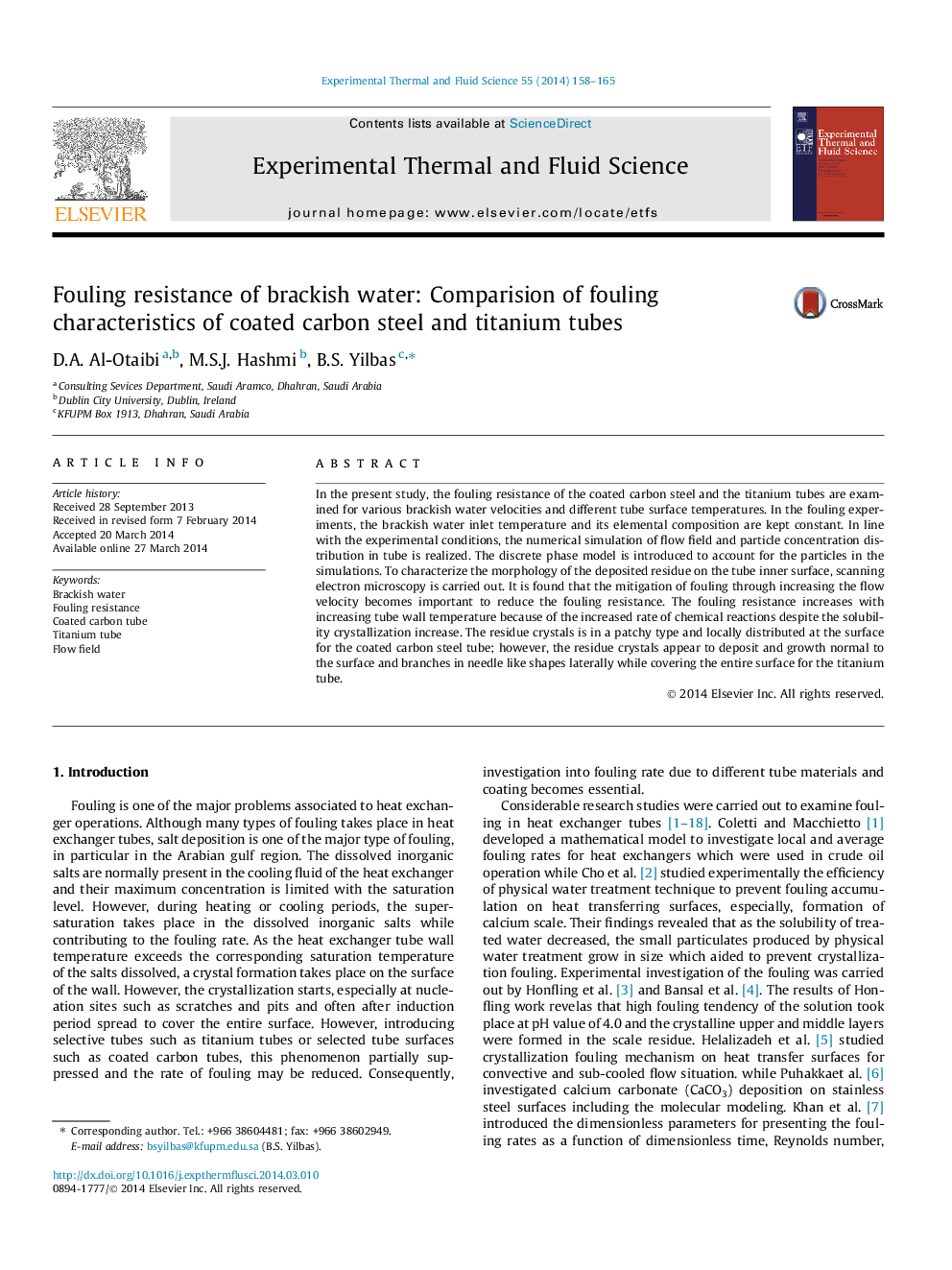| Article ID | Journal | Published Year | Pages | File Type |
|---|---|---|---|---|
| 651711 | Experimental Thermal and Fluid Science | 2014 | 8 Pages |
Abstract
In the present study, the fouling resistance of the coated carbon steel and the titanium tubes are examined for various brackish water velocities and different tube surface temperatures. In the fouling experiments, the brackish water inlet temperature and its elemental composition are kept constant. In line with the experimental conditions, the numerical simulation of flow field and particle concentration distribution in tube is realized. The discrete phase model is introduced to account for the particles in the simulations. To characterize the morphology of the deposited residue on the tube inner surface, scanning electron microscopy is carried out. It is found that the mitigation of fouling through increasing the flow velocity becomes important to reduce the fouling resistance. The fouling resistance increases with increasing tube wall temperature because of the increased rate of chemical reactions despite the solubility crystallization increase. The residue crystals is in a patchy type and locally distributed at the surface for the coated carbon steel tube; however, the residue crystals appear to deposit and growth normal to the surface and branches in needle like shapes laterally while covering the entire surface for the titanium tube.
Related Topics
Physical Sciences and Engineering
Chemical Engineering
Fluid Flow and Transfer Processes
Authors
D.A. Al-Otaibi, M.S.J. Hashmi, B.S. Yilbas,
